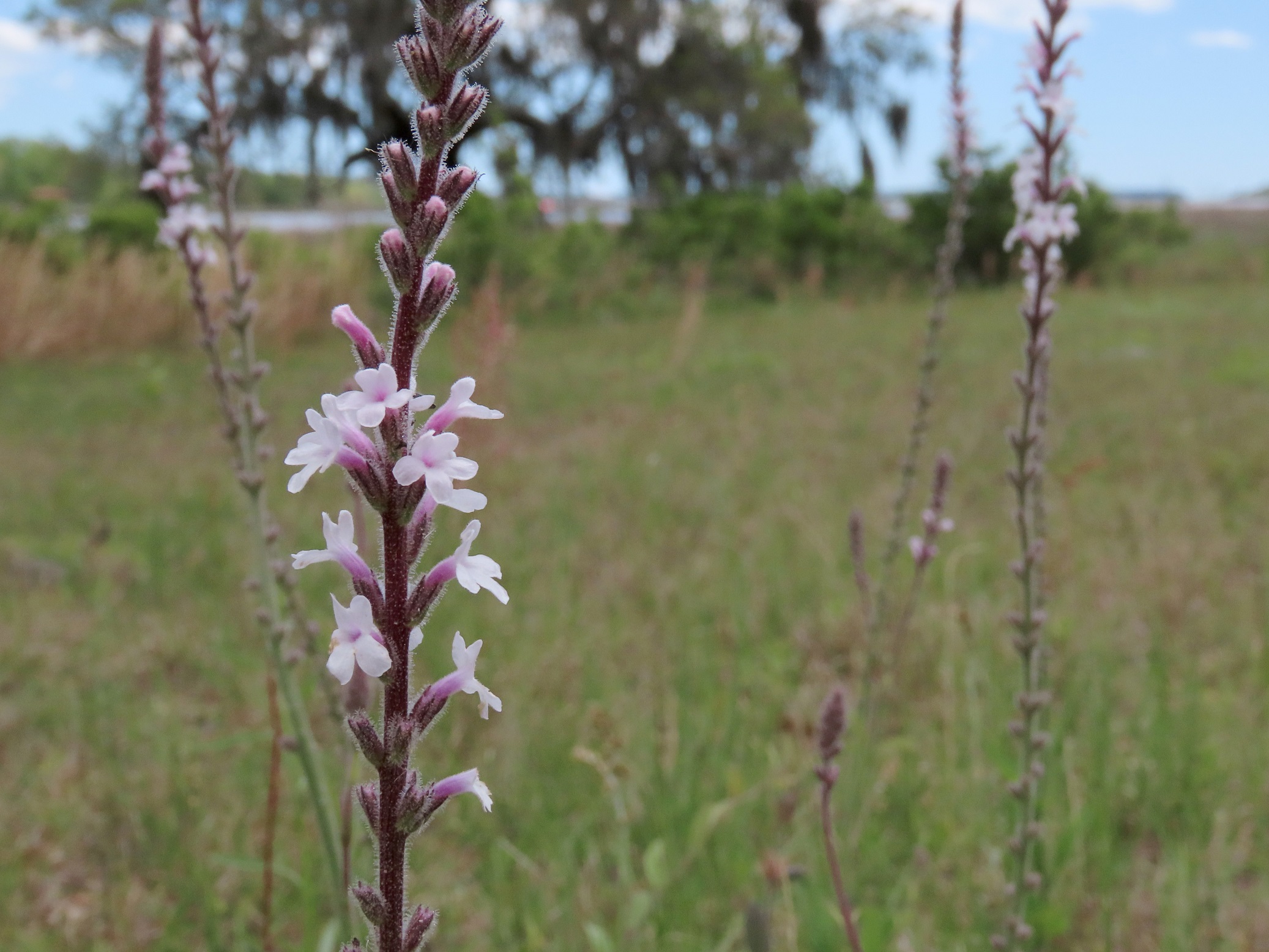
This week it’s a genus containing some of our most widespread weedy wildflowers: the Vervains of genus Verbena.
We have seven species of Vervain found in the Lowcountry but only five that are common enough in our area for me to consider discussing. Of those five, regrettably, only one is native. However, those exotic Verbenas are not noxious nor particularly invasive. In my eyes, they tend to do more good than harm wherever the crop up. These Verbenas are hardy perennials and have the capabilities to grow well in habitats where little else does and they all produce nectar useable to our native pollinators. Often, they are the only nectar sources in an area during the dogdays of summer and the non-native species can be an important part of degraded or urban ecosystems.
Our one native Verbena for today is Carolina Vervain (Verbena carnea). It’s a small plant, only getting twelve to eighteen inches in height, and produces a long stalk of sparsely arranged flowers. These flowers are a short, five-petalled tube with white petals and a magenta base. Carolina Vervain grows in some of the harshest habitats the Carolinas have to offer, including sand barrens and pine barrens. It blooms in May each spring on a solitary stem.
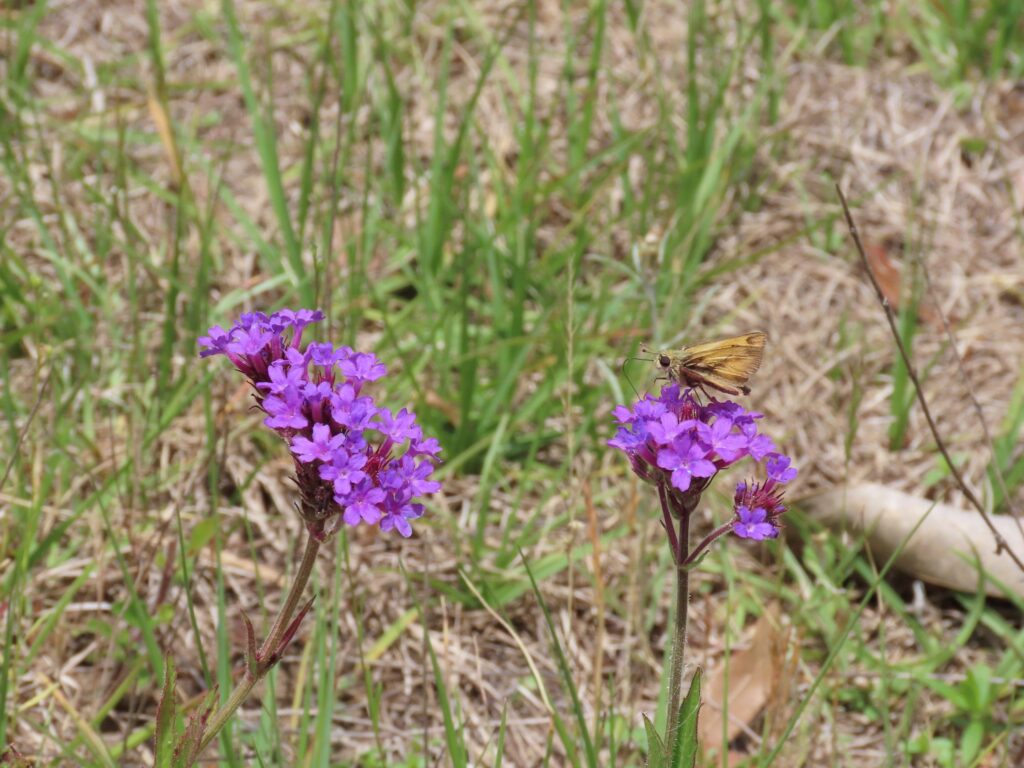
Our first exotic Verbena is Tuberous Vervain (Verbena rigida). Tuberous Vervain typically only grows about six inches in height and tends to creep along the ground as it grows. As the name implies, it has a tuberous root and it also spreads laterally. Tuberous Vervain grows well in lawns, gardens, parking lot islands, and highway medians in its preferred dry, sandy soils and sweltering heat. It’s by far the showiest Vervain we’re discussing today with a peak bloom time of April and a profusion of flower stalks. Each stalk is stuffed with deep-magenta flowers. It’s commonly sold as an ornamental because of this. This species is also the most aggressive of our exotic Vervains, forming dense patches in good growing conditions. However, in most disturbed habitats it’s a net positive but it does have the capacity to invade sensitive habitats.
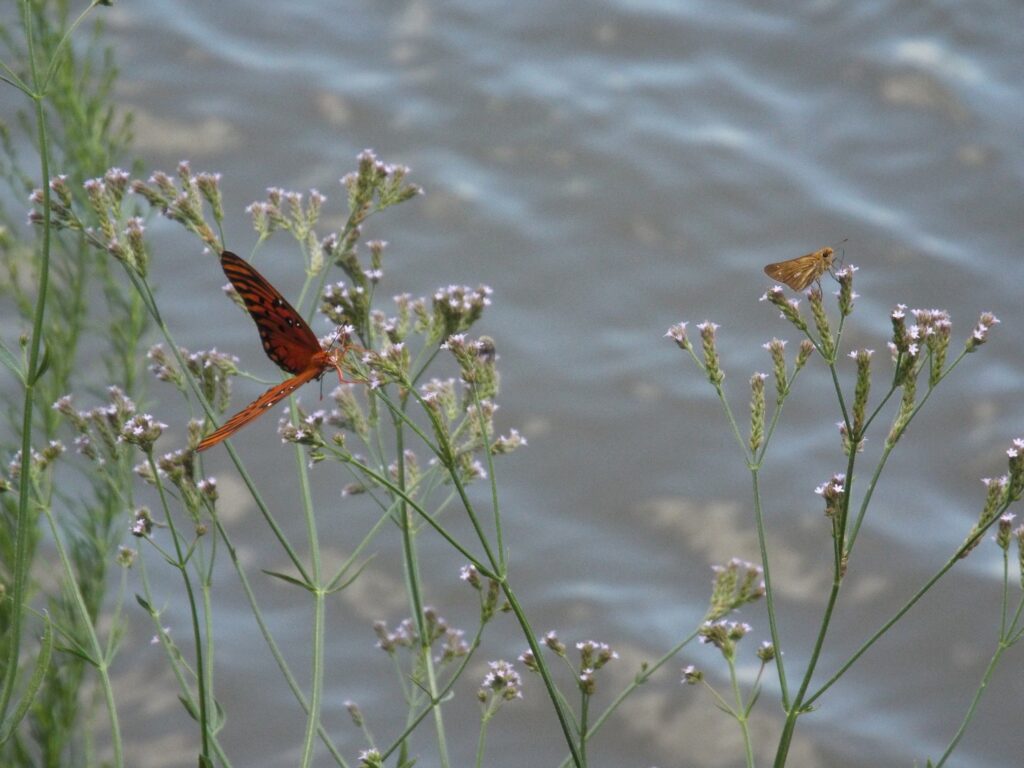
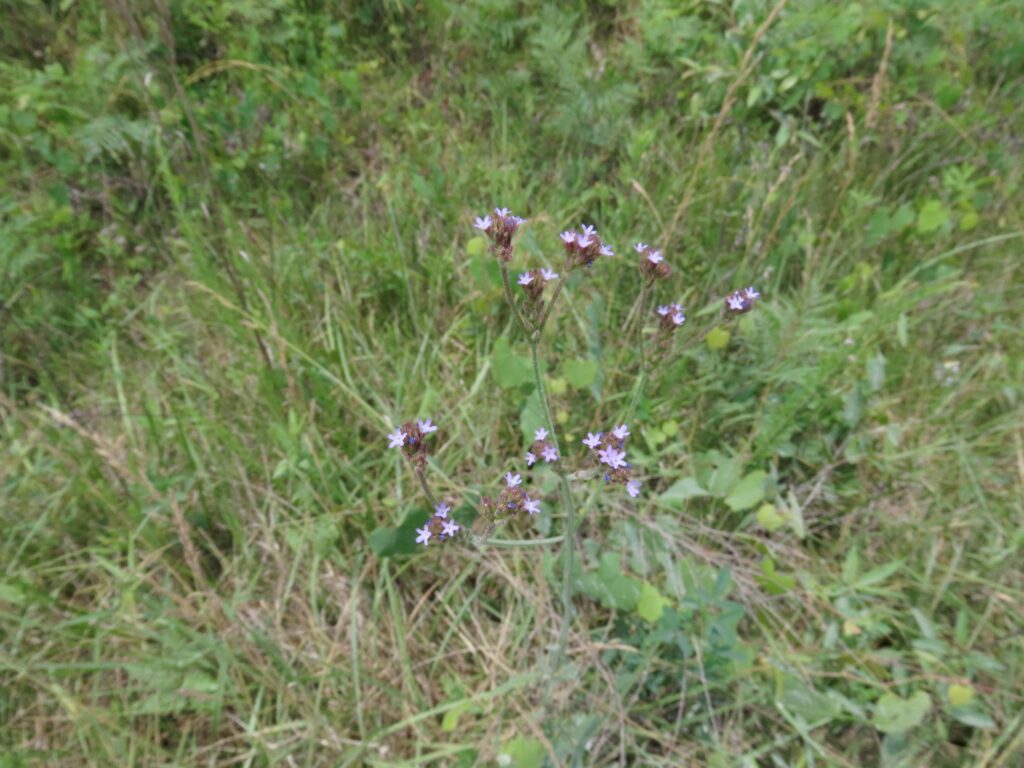
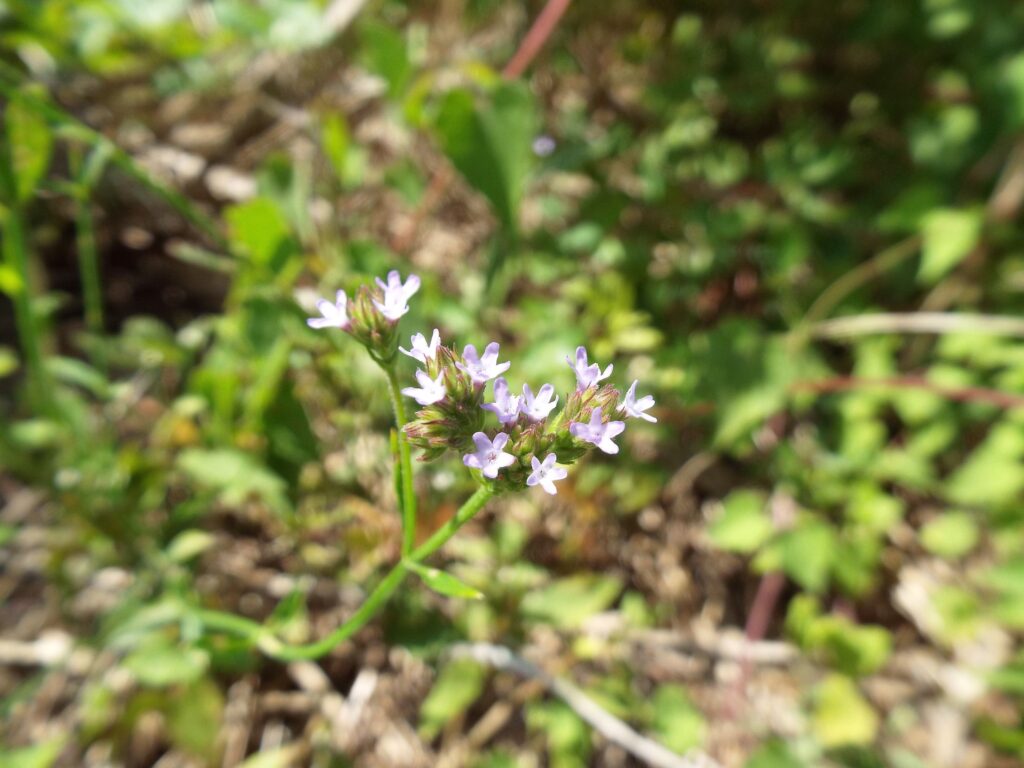
The last three species we’re discussing are all exotic species and they’re a real bugger to tell apart. These species are Brazilian Vervain (Verbena brasiliensis), Purpletop Vervain (Verbena bonariensis), and Brazilian Purpletop Vervain (Verbena incompta). Verbena incompta truly doesn’t have a distinct common name, so I’m referring to it by an amalgamated common name here. It was recently split off from Purpletop Vervain and looks incredibly similar to it, but is commonly referred to as “Brazilian Vervain” in the literature, it’s a confusing mess. So I’m just going to talk about the difference between Brazilian Vervain and the two Purpletops collectively. All three species are tall with skinny, stiff stems, and sparse, serrate, and simple leaves. They usually grow about four feet in height and have clusters of small magenta flowers. Brazilian Vervain has small, paler flowers on narrow, tubular flower clusters. The tube of the flower itself tends to be short, with the flower just sticking above the bracts. The Purpletop Vervains are often sold as ornamentals in seed mixes and have several showy ornamental varieties. However, the wild Purpletop Vervains are more subdued than their cultivated siblings. They have flowers with a deeper magenta and clusters that tend to fan out. The tube of the individual flower sticks up much further above the bracts. All three of these species will grow just about anywhere. They are extremely common on roadsides, fallow fields, abandoned lots, and any soil that has been heavily disturbed. Their flowers are often frequented by small butterflies and bees. Purpletops will bloom from May through August and Brazilian from April clear through October. Their habit of blooming in the dead of summer means they’re sometimes the only thing producing nectar in July and August, which makes them an important nectar sources for pollinators in degraded habitats, especially in urban areas.